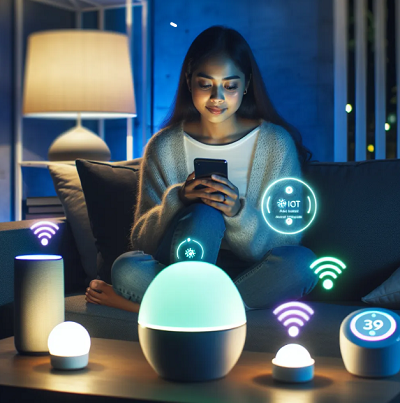Introduction: The Dawn of IoT Connectivity
The Internet of Things (IoT) has revolutionized how we interact with the world around us. From smart thermostats that adjust the temperature to our liking, to agricultural sensors that monitor soil moisture levels, IoT devices have found their way into every facet of our modern lives. At the heart of this revolution is the ability to control these devices remotely, bringing unparalleled convenience and efficiency. This blog explores the ins and outs of remotely controlling IoT devices, highlighting its benefits and providing a comprehensive guide to mastering this technology.
Understanding the Basics of IoT Device Remote Control
IoT devices connect to the internet to send and receive data, enabling remote control. This connectivity is facilitated by various protocols and technologies, such as MQTT (Message Queuing Telemetry Transport), HTTP (Hypertext Transfer Protocol), and Zigbee, a wireless technology that creates low-power, secure networks. Understanding these underlying technologies is crucial for anyone looking to delve into IoT device remote control, as they form the backbone of how these devices communicate and interact with each other and with user commands.
Setting Up Your IoT Device for Remote Access
To harness the full potential of your IoT device, setting it up for remote access is essential. This process involves ensuring the device is securely connected to the internet and choosing the right platform or app for remote control. Security should be a top priority during setup to protect your devices from unauthorized access. This can include setting strong passwords, enabling two-factor authentication, and keeping your device’s firmware up to date. Additionally, selecting a remote control platform or app that is compatible with your device and meets your specific needs is crucial for a seamless experience.
Advanced Remote Control Techniques
Beyond basic control functions, advanced features like automation and voice control can elevate your IoT experience. Automation allows devices to perform certain actions based on predefined rules or conditions, such as turning off lights when no one is in the room. Voice control, enabled by smart assistants like Amazon Alexa or Google Assistant, offers a hands-free way to interact with your devices. Integrating your IoT devices into a smart home ecosystem can further enhance control, allowing for coordinated actions between multiple devices for a truly intelligent home.
Navigating Challenges and Ensuring Security
Despite the benefits, setting up and using remote control for IoT devices can present challenges, such as connectivity issues or compatibility problems between devices and control platforms. Overcoming these challenges often requires troubleshooting connectivity, updating device firmware, or consulting with device manufacturers for support. Security is another critical consideration, as IoT devices can be vulnerable to hacking and unauthorized access. Adopting best practices for security, such as regularly updating passwords and employing encryption, can help protect your devices and your privacy.
Real-World Applications and Future Possibilities
The applications of remote control in IoT are vast and varied, encompassing sectors like home automation, healthcare, and agriculture. For instance, remotely controlled IoT devices can enable homeowners to manage their energy consumption more efficiently, allow healthcare providers to monitor patients’ health in real-time, and help farmers optimize irrigation schedules. Looking ahead, the integration of AI and machine learning with IoT device control promises even more sophisticated capabilities, such as predictive maintenance and personalized automation, heralding a future where our interaction with technology is more seamless and intuitive than ever.
By understanding the basics of IoT device remote control, setting up devices securely, exploring advanced control techniques, and staying informed about security best practices, users can fully leverage the potential of their IoT devices. As technology continues to evolve, the possibilities for innovation in remote control of IoT devices are boundless, promising a future where technology serves us in even more personalized and efficient ways.
